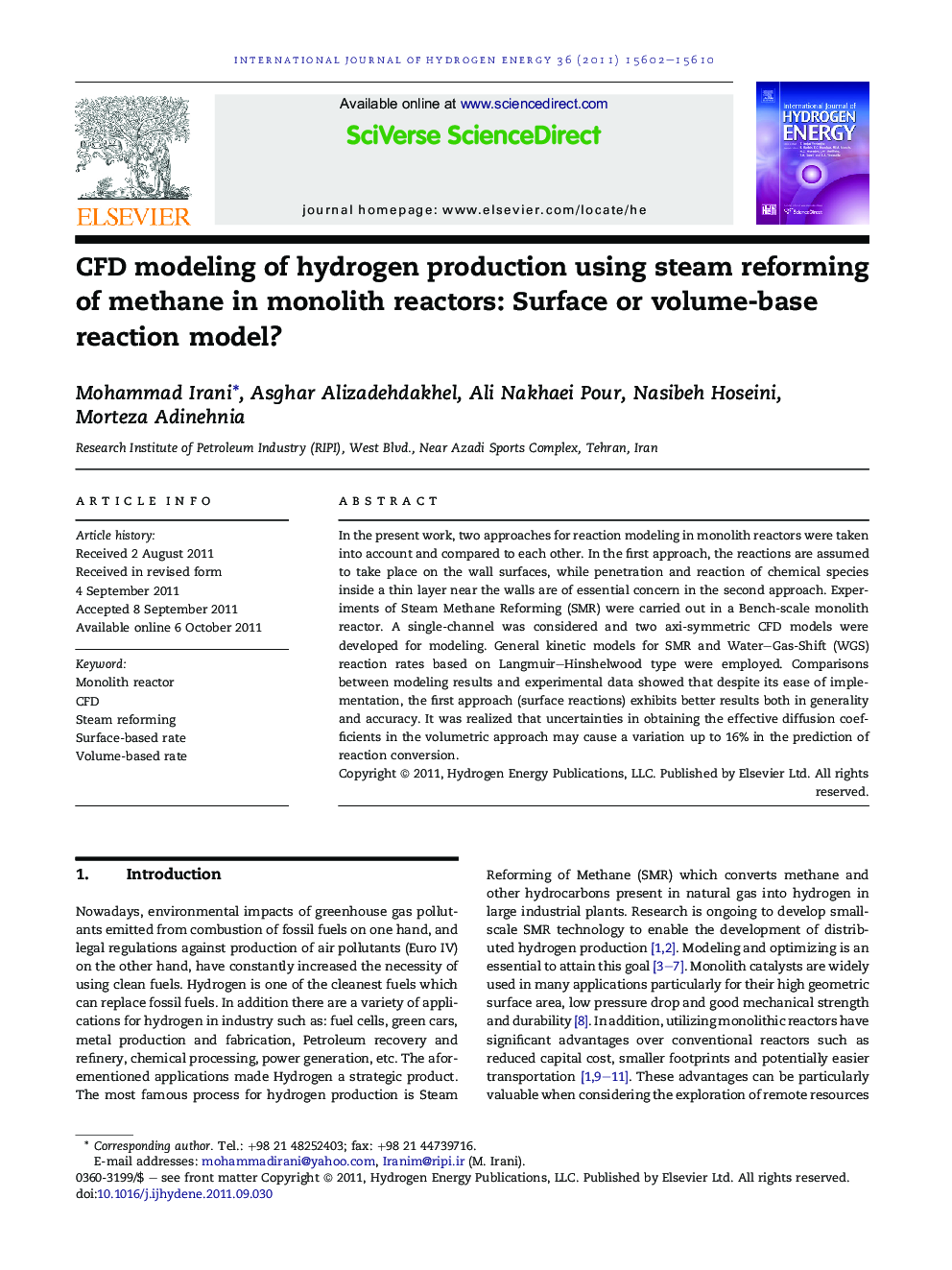| Article ID | Journal | Published Year | Pages | File Type |
|---|---|---|---|---|
| 1277357 | International Journal of Hydrogen Energy | 2011 | 9 Pages |
In the present work, two approaches for reaction modeling in monolith reactors were taken into account and compared to each other. In the first approach, the reactions are assumed to take place on the wall surfaces, while penetration and reaction of chemical species inside a thin layer near the walls are of essential concern in the second approach. Experiments of Steam Methane Reforming (SMR) were carried out in a Bench-scale monolith reactor. A single-channel was considered and two axi-symmetric CFD models were developed for modeling. General kinetic models for SMR and Water–Gas-Shift (WGS) reaction rates based on Langmuir–Hinshelwood type were employed. Comparisons between modeling results and experimental data showed that despite its ease of implementation, the first approach (surface reactions) exhibits better results both in generality and accuracy. It was realized that uncertainties in obtaining the effective diffusion coefficients in the volumetric approach may cause a variation up to 16% in the prediction of reaction conversion.
► Steam Methane Reforming experiments were done in a Bench-scale monolith reactor. ► We applied two approaches for reaction rates in modeling of monolith reactors. ► Volume and surface based reactions were compared with experiments. ► The surface approach gave better results both in generality and accuracy.
